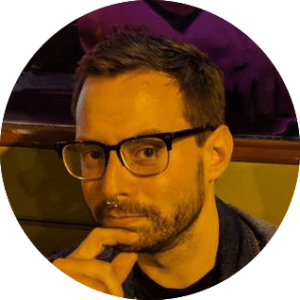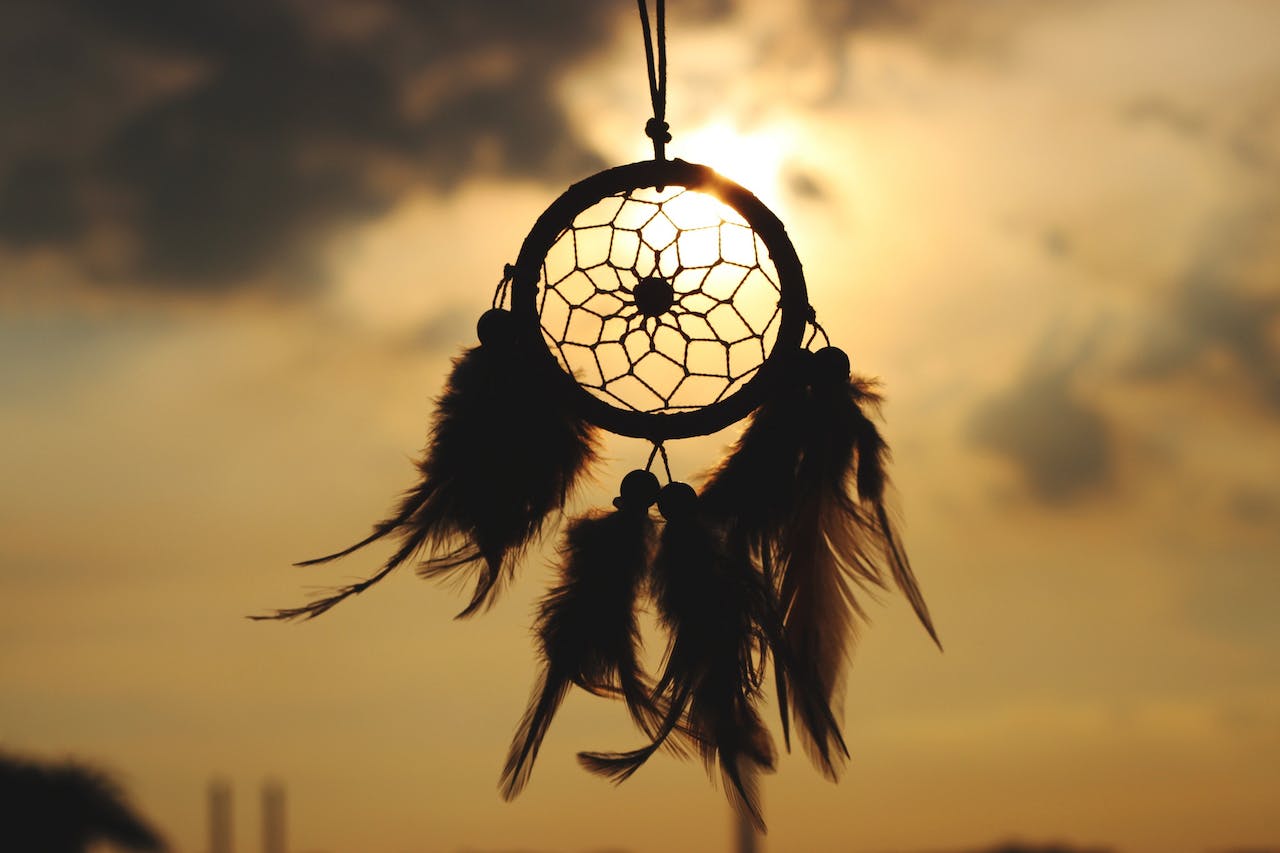Sweet Dreams Are Made of This

By Dustin J. DiPaulo
Staff Writer
20/9/2019

In Ancient Egypt, the dream world existed between the realms of the living and the dead. The dream state was an additional plane of existence – as real as the one we inhabit upon waking – and was believed to be frequented by deities and spirits. Dreams were how people communicated with the gods and the deceased and, thus, were regarded as sacred; the wisdom of divine intervention. A dream was a prophetic vision, ripe with teachings and sage advice from beyond.
Dream temples were erected across Egypt, where people would travel in order to have their dreams interpreted by priests and oracles. These temples were not entirely unlike hospitals, where myriad ailments were treated, most of which were psychological or spiritual in nature. The rituals which took place in these temples often involved chanting, entrancing patients into a deep hypnosis, guided meditations, fasting, and making sacrifices to an appropriate deity or spirit. Similar dream temples also existed in the Middle East and Ancient Greece, where the process was referred to as dream incubation.
Indigenous peoples from all over the world, too, have rich histories of regarding dreams as profound and crucial aspects of the human experience. In many cases, one’s dreaming life is believed to be just as important as one’s waking life, if not more so when it comes to spiritual and personal development. The Native Americans of the Eastern Woodlands, for example, traditionally believe that dreams are the single most valuable source of guidance, both in spiritual and practical matters. The Iroquois (of what is now Central and Western New York) made dream sharing the first communal business of each morning, as it was believed that dreams were coded messages from spirits and the deeper, wiser, usually inaccessible recesses of the self (what we now might refer to as the subconscious).

Dreaming, according to the native peoples of this region, is not passing or passive hallucination, then, but an active process by which people travel outside of their bodies, as well as the confines of time and space. The Iroquois believe that to dream is to project your core being into the past, present, or future, allowing you to consult with various spiritual guides, healers, and teachers (as well as the deceased) in deeper, more meaningful ways. Dreaming, when viewed this way, is but an extension of life and death, not something separate from either.
Alongside those of the Hindu faith who believe the universe was created by a dream from the god Brahma, the Australian Aboriginals also have a dream-based origin story. Dreams are at the center of the Aboriginal creation myth. Dreamtime, or The Dreaming as it is sometimes translated, is the period during which the Earth (and everything therein) was dreamt up by ancestors. Although, to speak of it in terms of time would be to mischaracterize the belief. The Dreaming did not occur in the past. Instead, it is, has, and will always be occurring. It is the eternal moment of all creation. It’s also described as “the beginning that never ended.” The whole of the terrestrial world – every river, mountain, tree, plant, hill, animal, human, grain of sand, and the vast expanse of sky above – according to this cosmology, is the direct result of dreams had by supernatural beings. These beings also, so the story goes, instructed the Aboriginal people, through these dreams passed down to man, important cultural and religious customs. Essentially, the crux of the Aboriginal worldview stems from the idea that mysterious celestial beings actually dreamed life into existence.

One thing that each of these conceptions of dreaming have in common is that dreaming is seen as an active and important part of life. That our dreams are not merely surrealist films directed by our subconscious once we shut down our bodies at the end of the day. That there is little to no distinction of importance between our waking reality and the numerous ephemeral micro-realities we slip into when we are asleep. That our dreams can be sources of learning, healing, and creation, and not just psychological arenas in which we are passively trained to more deftly navigate our waking lives.
Scientific research, however, has given rise to a more sterile and passive viewpoint on dreams. For the last century or so, it has been generally accepted by the scientific community that dreaming is nothing more than an evolutionarily beneficial means of reinforcing neural circuits involved in strengthening mental schemas and tempering expectations in order to more successfully survive a waking threat. So, for example, a hunter-gatherer human might have dreamt of being attacked by a bear, since that threat would be ever-present. The skill of being able to more effectively escape or subdue that bear, then, would be one that the hunter-gatherer would need in order to survive his everyday reality. To dream of being confronted by a hungry or violent bear provides the hunter-gatherer the opportunity to mentally rehearse the scenario (even if he is not consciously aware that he is doing it) and, therefore, potentially be somewhat more adept at dealing with a real bear attack upon waking.
To dream of being confronted by a hungry or violent bear provides the hunter-gatherer the opportunity to mentally rehearse the scenario.
Today, though, at least for many of us, the prevailing threat is not physical or predatory in nature, but social. Which is why our dreams may be less frequently rehearsals in how to survive the elements and more commonly exercises in how to survive social pressures and threats. Maybe, for instance, you have dreamt of showing up late to work or not getting an important school assignment done on time which resulted in being reprimanded by your boss or your professor. Having a dream like this reinforces the mental schemas necessary to be able to navigate this particular social threat, since it is in your best interest not to get fired or receive a failing grade. Your boss or instructor is not likely to maul you like a bear, but it is still a threatening situation that your unconscious mind recognizes requires practice in order to more successfully navigate it should it actually occur.
But maybe the dreaming mind does not need to be so passive. On average, a person spends about one-third of her lifetime asleep. Perhaps sleep does not need to be, as the rapper Nas poetically put it, “the cousin of death.” Lucid dreaming might be the key to taking advantage of these otherwise lost hours of life – as well as gaining personal, spiritual, and practical insights, as the indigenous peoples have, and therapeutic benefits.
Lucid dreaming might be the key to gaining personal, spiritual, and practical insights, and therapeutic benefits.
A lucid dream is precisely what it sounds like: a dream during which one is conscious (or lucid) of the fact that she is having a dream. They occur almost exclusively in REM sleep, that state of sleep where our dreams are at their most vivid and immersive. Once a dreamer becomes aware of the fact that she is dreaming, the entire experience is hers to control, shape, and bend to her will. In other words, once lucidity is achieved, if you can think it, you can do it.
There is, of course, much fun to be had in such a state. You can endow yourself with powers like flight, invisibility, or superhuman strength. You can indulge in any manner of euphoric reverie you like (carnal or otherwise). You can create entire dream worlds to explore. You can compose surreal symphonies if you are musically inclined. You can play your favorite sport, or create some gravity-defying game of your own. There are virtually no limits in a lucid dream, save for those of your own imagination.

But lucid dreaming has some potential benefits that go far beyond merely reveling in the joys of boundless unreality as well. People who suffer from post-traumatic stress disorder (PTSD), for example, have found that lucid dreaming, when complimented with more traditional daytime treatments, can help to diminish haunting flashbacks through what is known as Nightmare Therapy. Flashback nightmares are a common symptom of PTSD sufferers, and by learning to become lucid during such a nightmare, the patient is able to retroactively alter the memory in therapeutically strategic ways. Obviously, the memory of the trauma in question still exists, but through lucidly revisiting it in a dream and acting upon it, the patient is able to gain a sense of agency over the trauma.
This is achieved by, essentially, re-scripting the trauma through what is known as Imagery Rehearsal Therapy (IRT) – a relatively new cognitive behavioral treatment, outlined in 2010 by the American Academy of Sleep Medicine. Along with dream journaling whenever the subject has the nightmare, the subject is encouraged to rewrite the dream, creating a new narrative arc with a positive ending. Upon falling asleep, then, he is instructed to imagine and induce the rewritten, alternative version of the dream, thus, hopefully, re-scripting the nightmare altogether and diminishing some of the prolonged symptoms associated with the trauma. Through lucid dreaming and IRT, the patient becomes the author of his dreams and, therefore, the author of his own psyche.

Lucid dreaming, it’s important to note, is not yet widely employed in psychiatric practices. Scientists did not even start taking lucid dreaming seriously until around the 1980s and some still turn a skeptical eye to the entire enterprise. More studies will be necessary in order for the claims to be sufficiently supported by the scientific community at large. However, the research that has been done to date (along with hundreds of thousands of anecdotal claims) clearly shows that, if nothing else, lucid dreaming can improve psychological well-being. And, at the end of the day, isn’t peace of mind one of the things we’re all after? (Personally, I’ve had little success attempting to achieve lucidity in my dreams. I can think of maybe a handful of times I’ve had lucid dreams, but they were never the result of actually trying to have them. Which I have. Many times.)
Setting theological cosmology aside, I think the Aboriginals are onto something with their concept of The Dreaming. According to the myth, their gods took control of their dreams in order to create something beautiful for, of, and beyond themselves. They essentially lucid dreamed (and are still lucid dreaming) the world into existence. The world is perpetually becoming what it is, from one moment to the next, based on the actions of those who inhabit it; and the truth of the matter is human beings play an immensely important role in shaping it. In other words, our actions and words can alter our waking realities in the same way (albeit to a lesser degree) that they can alter our dreaming realities once lucidity is achieved.
Maybe it’s about time that we started taking our dreams more seriously. If we can learn from our dreams, heal our own wounds, and gain the sort of mindfulness that successfully lucid dreaming on a regular basis requires, who knows what we might be able to accomplish in the real world once we wake up?
